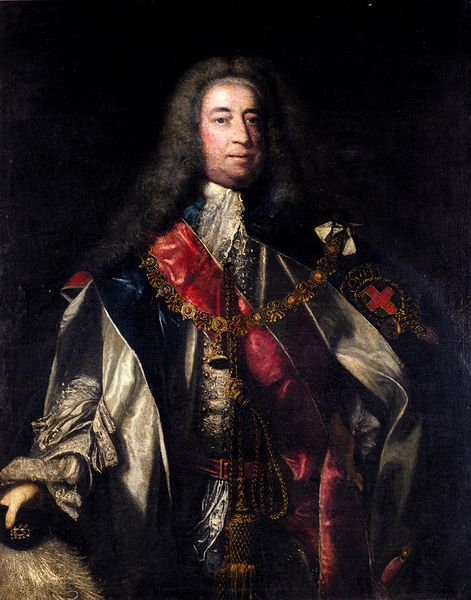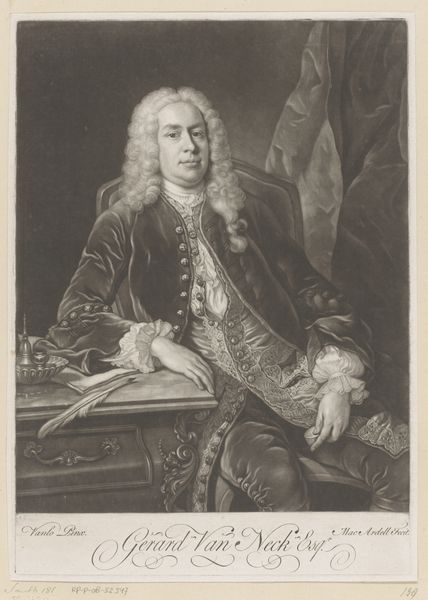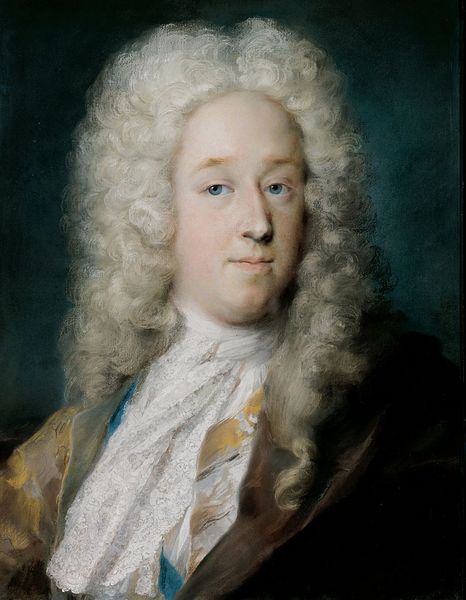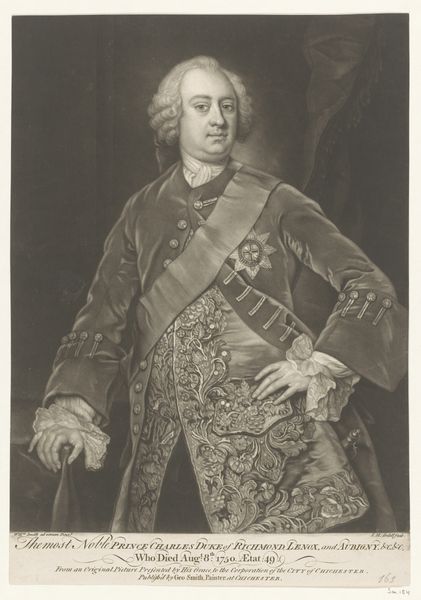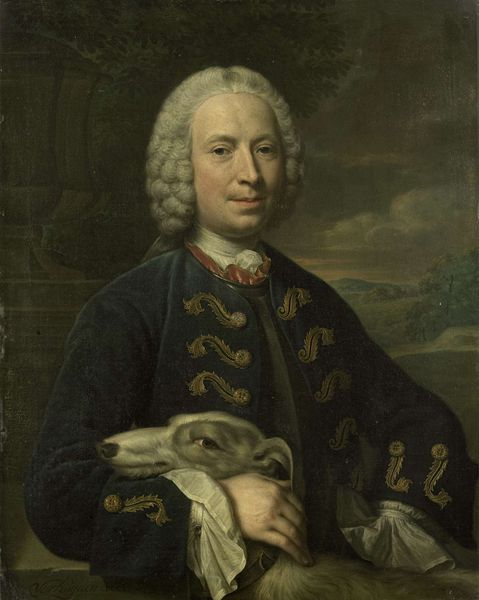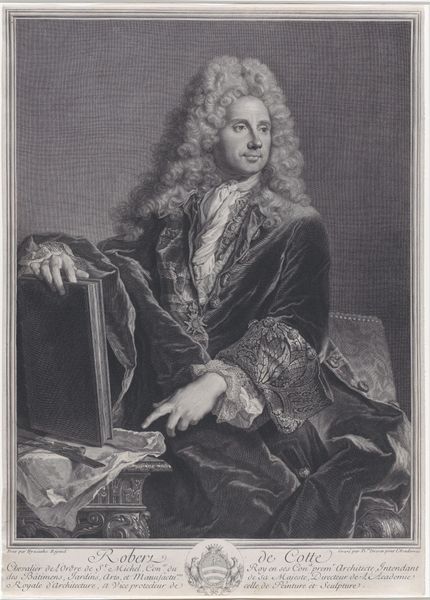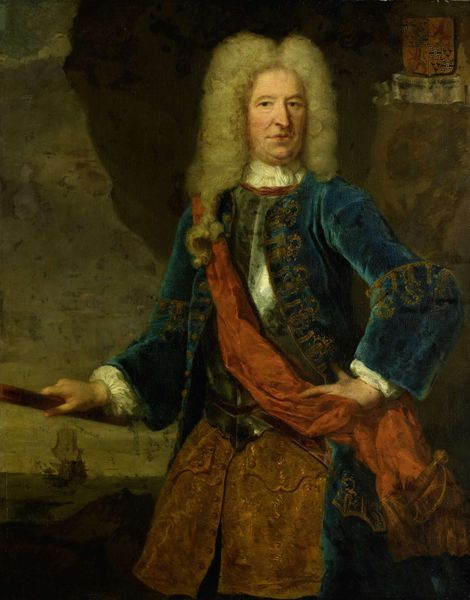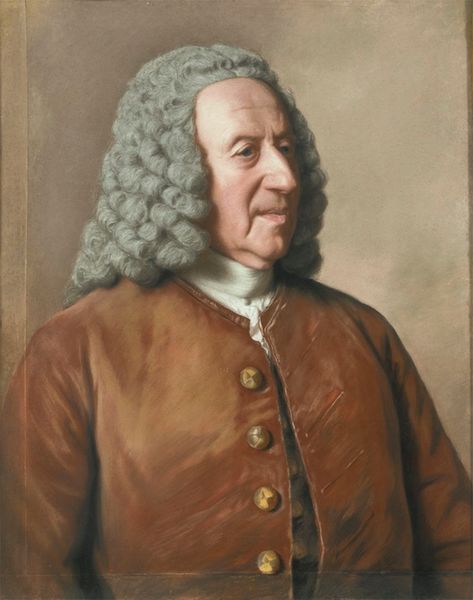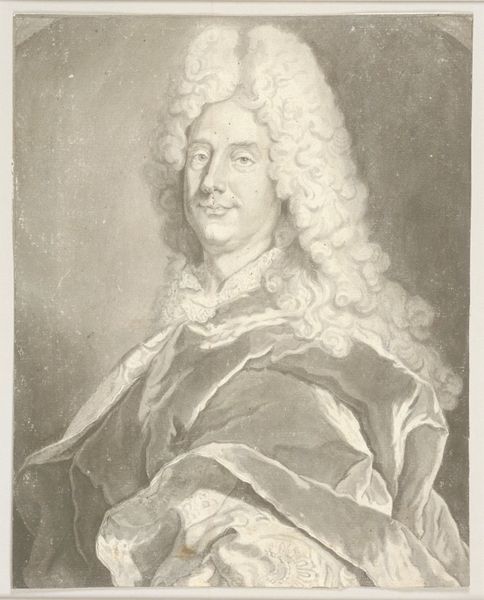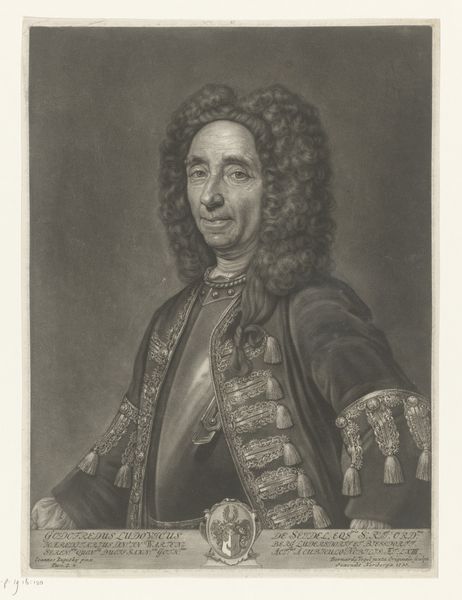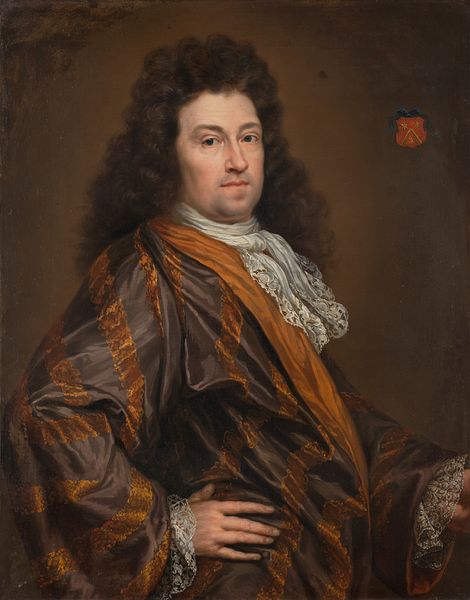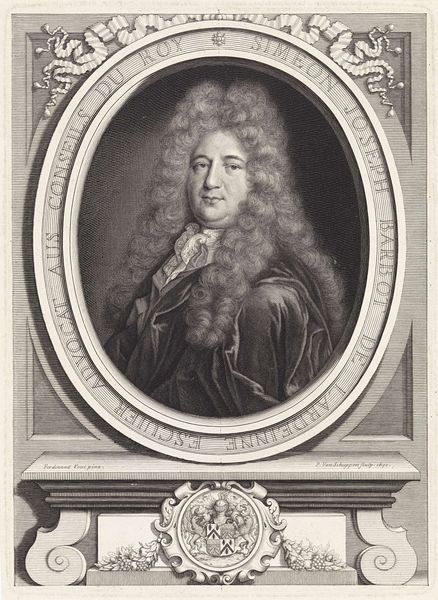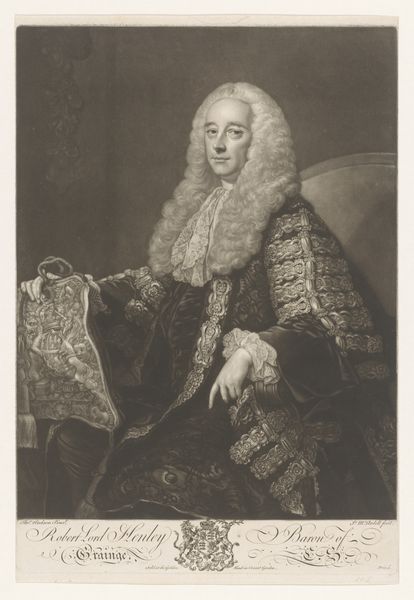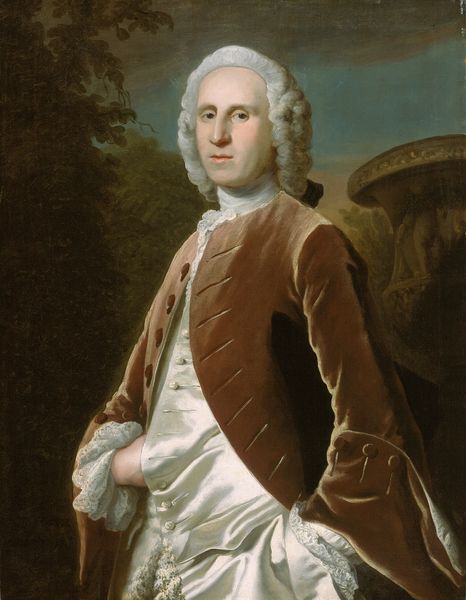
painting, oil-paint
#
portrait
#
baroque
#
portrait
#
painting
#
oil-paint
#
history-painting
Copyright: Public domain
Editor: Here we have Ivan Nikitin's 1725 oil painting, "Chancellor G.I. Golovkin." I'm immediately struck by the contrast between the elaborate wig and formal attire, and the sitter's rather plain, almost weary face. How do you interpret this work? Curator: It's a fascinating tension, isn't it? Look beyond the surface. Golovkin was a major figure in Peter the Great's government, instrumental in shaping Russia's foreign policy. This portrait, commissioned during a time of intense social upheaval and westernization, speaks to the construction of power. What does this portrait communicate about Russia's aspirations on the world stage and its fraught relationship with Western ideals, particularly concerning nobility and meritocracy? Editor: So, the weariness I sensed might be reflecting the strain of that historical moment? A sort of quiet critique embedded within a formal portrait? Curator: Precisely! Consider the symbolism. The medals denote service and loyalty to the Tsar, values crucial in a rapidly modernizing, authoritarian state. Think about the societal pressures. Does this regal presentation really convey Golovkin's character, or the political narrative in which he operates? And, importantly, how do those ideals manifest differently for men and women? Editor: That makes me reconsider my initial read. I was focused on the individual, but now I see it as a commentary on a whole system, or rather, how one system replaces another. Curator: And how that impacts identity. Whose interests were served by carefully controlled, public displays like this? Whose voices are missing, and how are societal inequalities maintained through carefully curated imagery? Editor: I never would have considered how the portrait itself participates in political discourse like this. Curator: By analyzing artworks like Nikitin’s portrait of Golovkin, we unveil not only aesthetic preferences, but the political ideologies embedded within, allowing a greater understanding of the dynamics that shaped and still shape societal hierarchies and inequities.
Comments
No comments
Be the first to comment and join the conversation on the ultimate creative platform.
